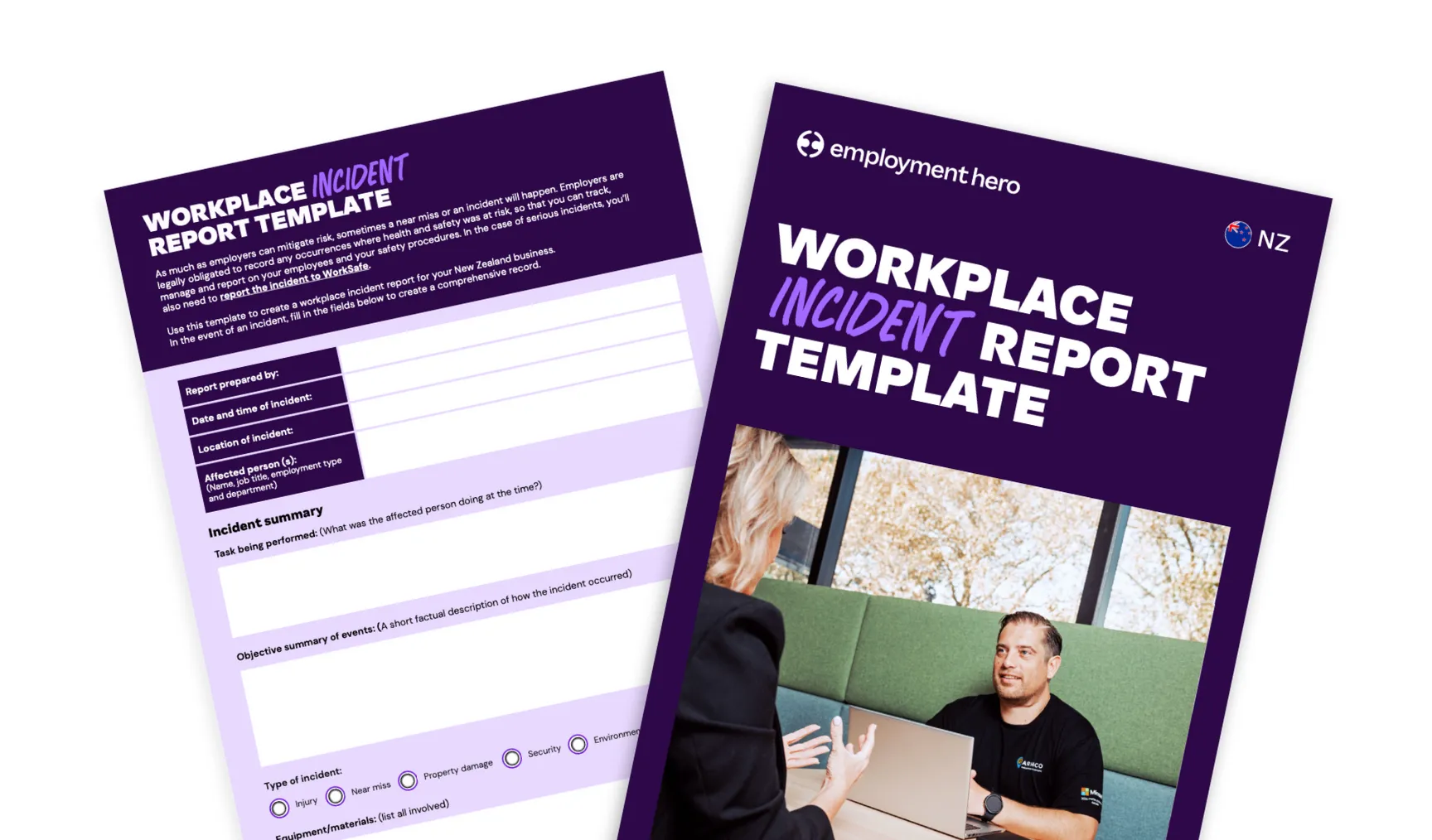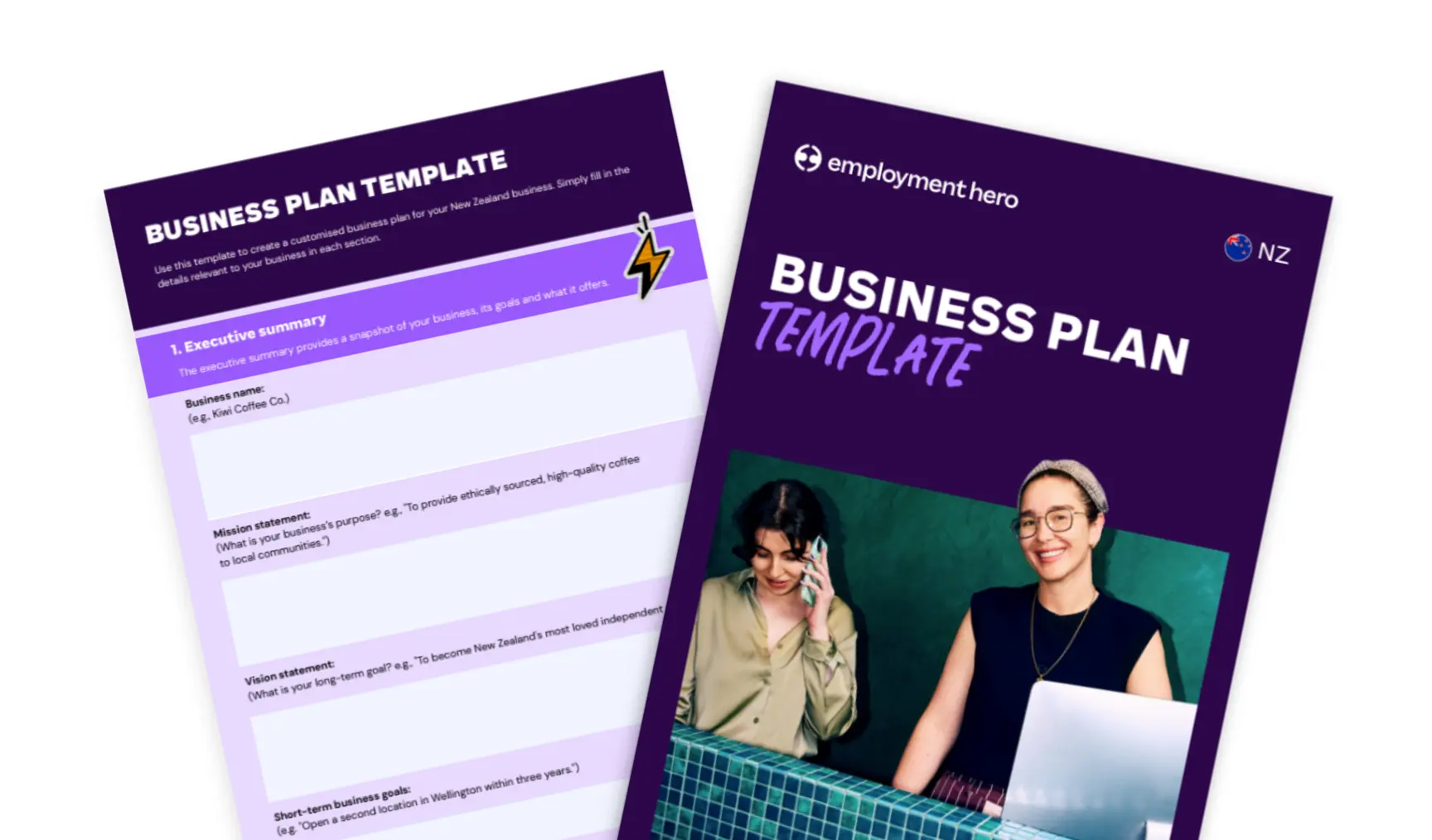Encouraging Staff To Take Annual Leave – Email Template [Free Download]
Published
Encouraging Staff To Take Annual Leave – Email Template [Free Download]
Published
1 min read
As a line manager or team leader, you might find yourself in the situation where you need to send a friendly reminder to one (or all) of your direct reports to give them a nudge to book their annual leave.
That’s why we’ve put together a couple of email templates to provide some real-life examples. We recommend using these templates as a starting point – although you can copy and paste this text, it’s best to tailor the content to your recipient and your specific situation, and remember to include any relevant details.
What will you find in this email template?
- Email template for individual team members
- Email template for a team
Download this template now.
Why should managers encourage employees to take their annual leave?
In today’s fast-paced work environment, it’s not uncommon for employees to accumulate large amounts of annual leave. While having a lot of leave stored up may seem like a good thing, it can actually have negative consequences for both employees and their employers.
Research has shown that taking regular breaks from work is essential for maintaining good mental health, reducing stress, and improving job satisfaction. Additionally, from an employer’s perspective, having large amounts of unused leave can create operational challenges and financial risks.
Managers should encourage employees to take their annual leave because it has numerous benefits for both the employee and the organisation. Let’s take a closer look at some of the reasons why.
Promotes work-life balance
Taking annual leave allows employees to take a break from work and focus on their personal life, which helps to reduce stress and improve overall wellbeing. This can lead to increased job satisfaction and productivity when they return to work.
Prevents burnout
Employees who work long hours or take on too much work without taking regular breaks are at risk of burnout. Taking annual leave can help to prevent burnout and keep employees motivated and engaged.
Increases creativity and innovation
Time away from work can give employees the opportunity to pursue hobbies and interests outside of work, which can inspire new ideas and creative solutions to work-related problems. A well-rested employee can think clearly and outside of the box, contributing to the team’s creativity and innovation.
Improves teamwork
When employees take annual leave, it can provide opportunities for other team members to step up and take on new responsibilities, which can improve teamwork and collaboration.
Supports compliance
Many jurisdictions have laws that require employers to provide employees with a certain amount of annual leave. Encouraging employees to take their annual leave helps ensure compliance with these laws.
No matter which way you look at it, encouraging employees to take annual leave is a win-win situation for both the employee and the company.
Get our guide to boosting employee wellbeing here.
How can employee burnout affect your company?
Decreased productivity
Burned-out employees are often less productive, as they may struggle to focus and complete tasks efficiently. Occupational stress can result in missed deadlines and reduced quality of work, which can ultimately affect the company’s bottom line.
Increased absenteeism and turnover
Burned-out employees may be more likely to take sick leave or mental health days, or even leave the company altogether. This can lead to increased absenteeism and turnover, which can be costly and disruptive for the business.
Reduced morale and engagement
Burned-out employees may become disengaged from their work and colleagues, which can negatively impact morale and team dynamics. This can create a negative work environment and affect the overall company culture.
Health and safety risks
Burnout can have physical and mental health consequences, which can result in safety risks in the workplace. Tired and stressed employees are more prone to making mistakes or accidents, which can result in injuries or other safety incidents.
Damaged company reputation
A company with high rates of burnout and turnover can develop a negative reputation in the industry, which can make it more difficult to attract and retain top talent.
Employee burnout can have significant negative impacts on a company’s productivity, employee retention, workplace culture, safety, and reputation. This is why it’s so important for employers to take proactive steps to prevent burnout and support the wellbeing of their employees. This can include actions such as conducting regular staff wellbeing surveys or even taking measures to provide self-care in the workplace.
6 best practice tips for encouraging employees to take their annual leave
It’s worth mentioning here that it’s vital for your company culture to take steps to foster a happy workplace while employees are still in work. But you also want them to feel able to take time off too.
Encouraging employees to take their annual leave requires a proactive and supportive approach that emphasises the benefits of taking time off and provides the necessary resources and support to make it happen. So without further ado, here are our best practice tips for encouraging employees to take their annual leave.
1. Set a positive example
As a manager, you should lead by example and take your own annual leave. This shows your employees that taking time off is not only allowed, but also encouraged.
2. Make sure policies and procedures are clear
Ensure that your company’s policies and procedures around annual leave are clear and accessible. This includes information about how much leave employees are entitled to, how they can request leave, and any restrictions or limitations on when leave can be taken.
3. Communicate the benefits
Regularly communicate the benefits of taking annual leave to your employees. This includes the positive impact on their health and wellbeing, as well as their productivity and job satisfaction.
4. Encourage planning
Encourage employees to plan their annual leave in advance and to schedule it at a time that works for them and the business. This can help to ensure that workloads are covered while employees are away, and that there is no disruption to business operations.
5. Offer support
Provide support and resources to employees to help them plan their leave and manage their workload before and after they take time off. This could include training for colleagues who are covering their work, or providing tips and resources for managing workloads before and after time off.
6. Celebrate employees who take leave
Recognise and celebrate employees who take their annual leave by thanking them for their hard work and dedication, and acknowledging the positive impact that their time away can have on their wellbeing and the business as a whole.
Can you also encourage employees to take sick leave?
Encouraging employees to take sick leave is an important part of promoting employee wellbeing, preventing the spread of illness, supporting compliance with employment law, and building trust and loyalty between employers and employees.
This is because when employees are able to take sick leave, they can focus on their health and recover from illness or injury. This promotes their overall wellbeing and can help them return to work more quickly and with greater energy and focus.
Another workplace benefit of encouraging sick leave is that it prevents the spread of illness. If an employee comes to work while they are sick, they may spread illness to other employees, which can negatively impact productivity and morale. Encouraging sick employees to stay home and take time off when needed can help prevent the spread of illness in the workplace.
Lastly, when employers show concern for their employees’ wellbeing by encouraging them to take sick leave, it can build trust and loyalty between the employer and employee. This can improve employee morale, job satisfaction, and retention.
While you want your employees to feel that they can take time to recover when they’re not able to come into work, it’s critically important for employers to have clear policies and procedures around sick leave. These should include how to request and report sick leave, and any restrictions or limitations on taking sick leave. Employers should also communicate these policies and procedures regularly and encourage employees to use their sick leave when they need it.
What should you do if an employee is unwilling to take annual leave?
If an employee is unwilling to take annual leave, you need to understand the reason behind their reluctance so that you can address any concerns or issues they may have. Here are some practical steps you can take to navigate the process.
- Talk to the employee
Reach out to your employee to check in. Schedule a meeting with the employee to discuss their concerns and reasons for not taking annual leave. This can help you understand their perspective and identify any potential solutions or accommodations.
- Explain the benefits of taking leave
Remind the employee of the benefits of taking annual leave, such as reducing stress and improving wellbeing, increasing productivity and creativity, and avoiding burnout.
- Emphasise the importance of rest
Explain to the employee that rest and time away from work are important for their physical and mental health. Encourage them to take time off to recharge and come back to work feeling refreshed and energised.
- Highlight company policies
Remind the employee of the company’s policies around annual leave, including any minimum or maximum requirements, and explain that taking leave is a necessary part of the job.
- Provide options
If the employee is hesitant to take a long period of leave, consider offering options such as taking shorter periods of leave throughout the year, or taking a long weekend or a day off here and there.
- Seek support
If the employee’s reluctance to take annual leave is related to a medical condition or other personal issue, consider seeking support from an HR professional or external specialist to help address the situation.
It’s important to approach the conversation with the employee in a supportive and understanding manner, and to work together to find a solution that works for both the employee and the company. If the employee continues to refuse to take annual leave and this is negatively impacting their work or the company, it may be necessary to escalate the situation to a more formal process, depending on the severity of the situation.
Can you force employees to take annual leave if they have accrued too much leave?
In an ideal world, everybody would take their full annual leave entitlement every year without a single nudge. But there’s always going to be someone who needs some gentle encouragement – if not more.
When it comes to whether you can force an employee to take annual leave, the answer depends on the specific laws and regulations in your country (or where the employee works), as well as your own policies and employment contract with the employee.
In some jurisdictions, there may be laws or regulations that require employers to ensure that their employees take a minimum amount of annual leave each year, or to use up any accrued leave by a certain deadline. In these cases, the employer may be able to require employees to take annual leave if they have accrued too much.
In the UK, employers have the right to determine when employees take their holiday. However, employers must give employees two days’ notice for every day they want them to take. In Australia, in certain circumstances the employer can direct an employee to take annual leave when they have an excessive annual leave balance.
In other jurisdictions, there may be no legal requirement for employers to force employees to take annual leave, even if they have accrued a large amount. In these cases, the employer may need to negotiate with the employee to encourage them to take the leave, but they cannot force them to do so.
Employers should consult with legal experts to review the applicable laws and regulations in their jurisdiction, as well as their own company policies and employment contracts, before making any decisions about forcing employees to take annual leave.
How can Employment Hero help with leave management?
Employment Hero is a cloud-based HR and payroll software that can help employers to streamline their leave management processes, reduce administrative burdens, and ensure compliance with applicable regulations, while providing a better employee experience through self-service functionality.
Centralised leave management
Employment Hero provides a centralised leave management system, where employers and managers can view and manage employee leave requests, balances and entitlements, all in one place.
Employee self-service
Employees can use Employment Hero to submit leave requests, view their leave balances and entitlements, and receive notifications about the status of their requests.
Automated leave tracking
Employment Hero can automatically track and update leave balances, ensuring that employees are aware of their remaining entitlements and that managers are aware of any leave that has been taken.
Leave approvals
Employment Hero allows managers to approve or reject leave requests online, reducing the administrative burden of managing leave requests.
Reporting
Employment Hero provides a range of reports and analytics related to leave management, allowing employers to gain insights into their leave patterns and identify areas for improvement.
Compliance
Employment Hero supports employers to comply with applicable leave entitlements and regulations, such as keeping up to date with minimum annual leave requirements and other relevant legislation.
Download the email template now.
Disclaimer: The information in this article is current as at 28 March 2023, and has been prepared by Employment Hero Pty Ltd (ABN 11 160 047 709) and its related bodies corporate (Employment Hero). The views expressed in this article are general information only, are provided in good faith to assist employers and their employees, and should not be relied on as professional advice. The Information is based on data supplied by third parties. While such data is believed to be accurate, it has not been independently verified and no warranties are given that it is complete, accurate, up to date or fit for the purpose for which it is required. Employment Hero does not accept responsibility for any inaccuracy in such data and is not liable for any loss or damages arising either directly or indirectly as a result of reliance on, use of or inability to use any information provided in this article.You should undertake your own research and to seek professional advice before making any decisions or relying on the information in this article.
Download this template now.
Register for the Template
Related Resources
-
 Read more: Incident report template NZ: free download for businesses
Read more: Incident report template NZ: free download for businessesIncident report template NZ: free download for businesses
Download our free NZ incident report template. Record and report workplace incidents correctly under HSWA and ACC requirements.
-
 Read more: Serious misconduct in New Zealand: What employers must know
Read more: Serious misconduct in New Zealand: What employers must knowSerious misconduct in New Zealand: What employers must know
Learn what serious misconduct means under NZ law, common examples, and how to manage the process legally and fairly. Protect…
-
 Read more: Free business plan template for New Zealand business owners
Read more: Free business plan template for New Zealand business ownersFree business plan template for New Zealand business owners
Published Published Starting and running a business is a journey that needs direction. That’s why a well-crafted business plan is…





















